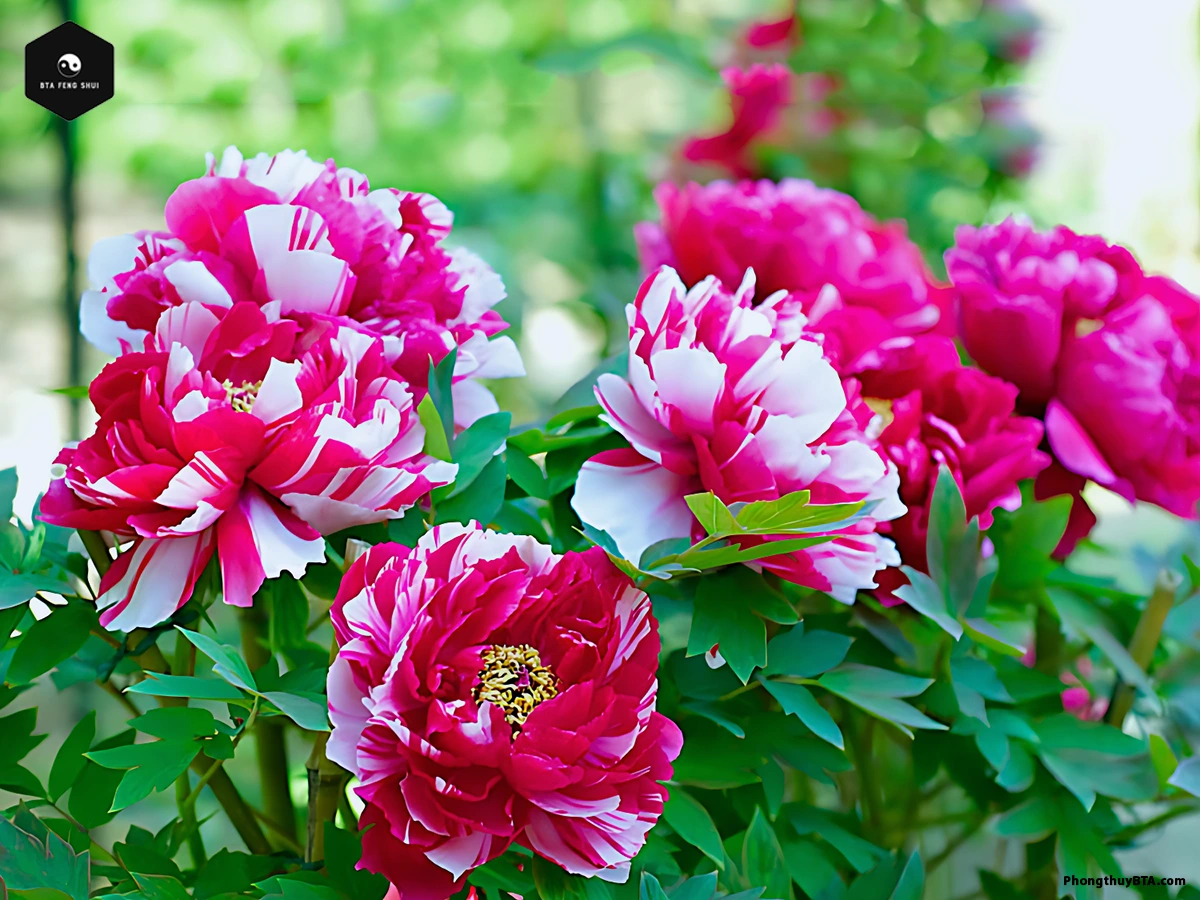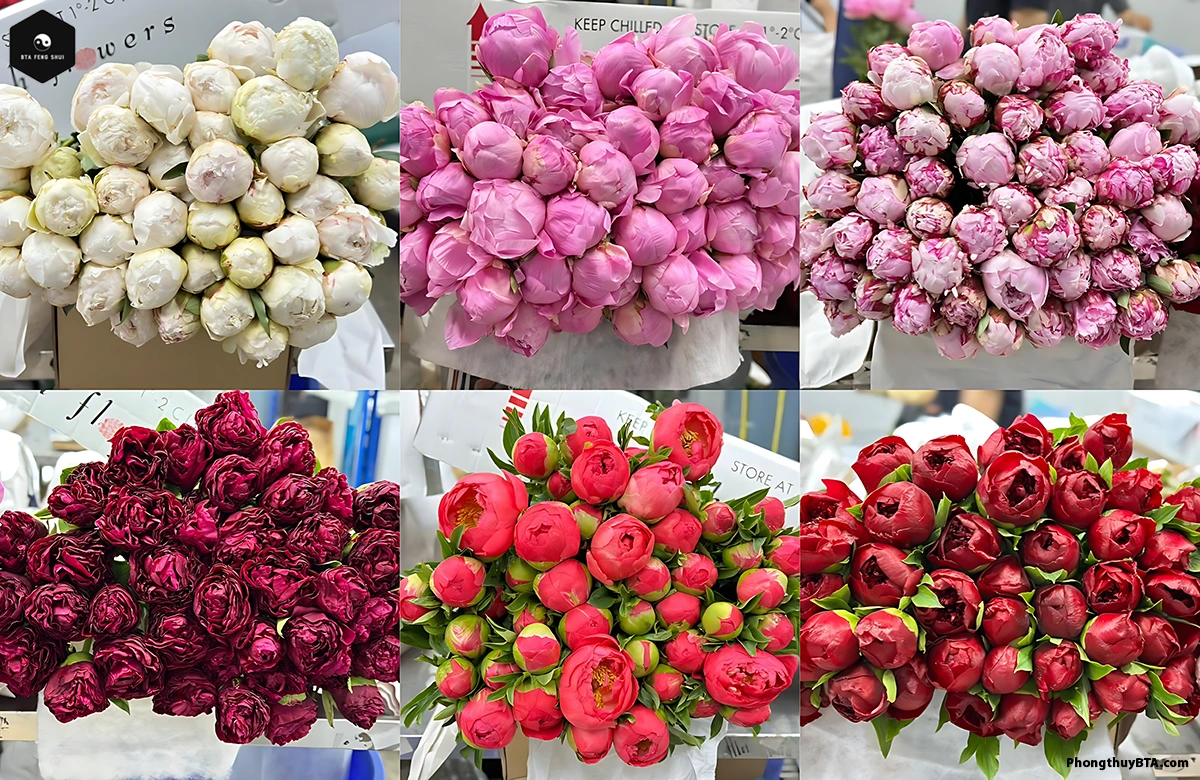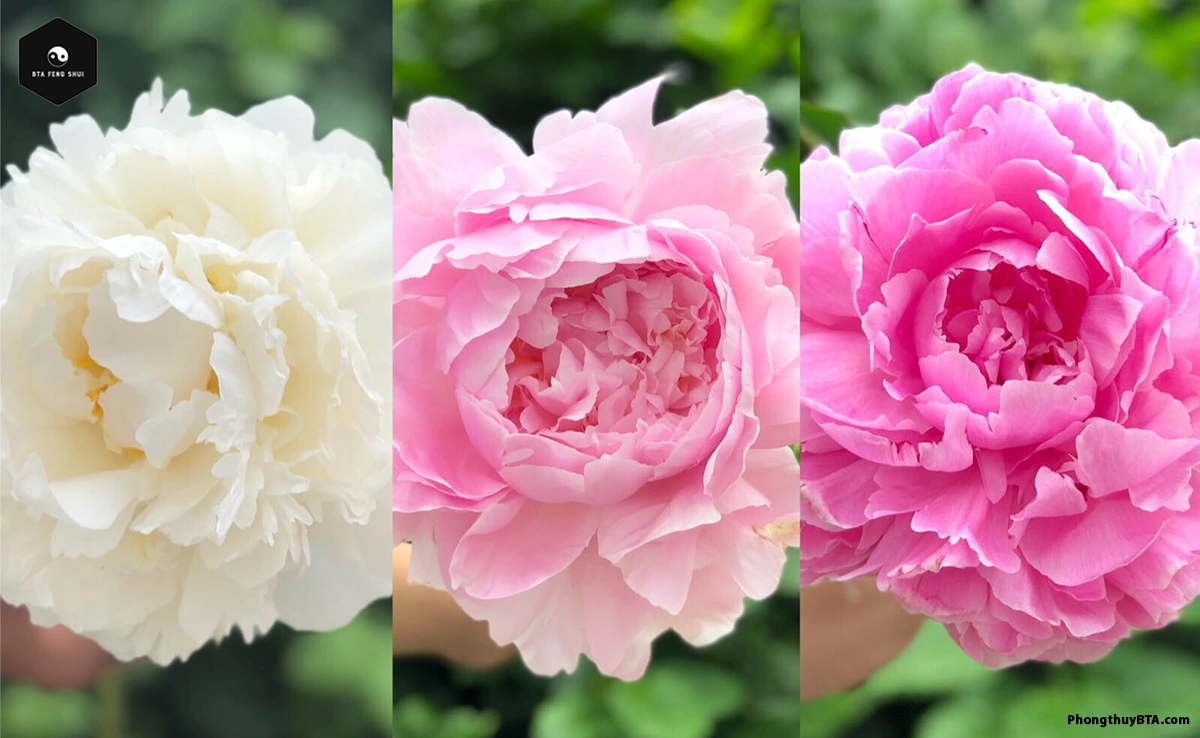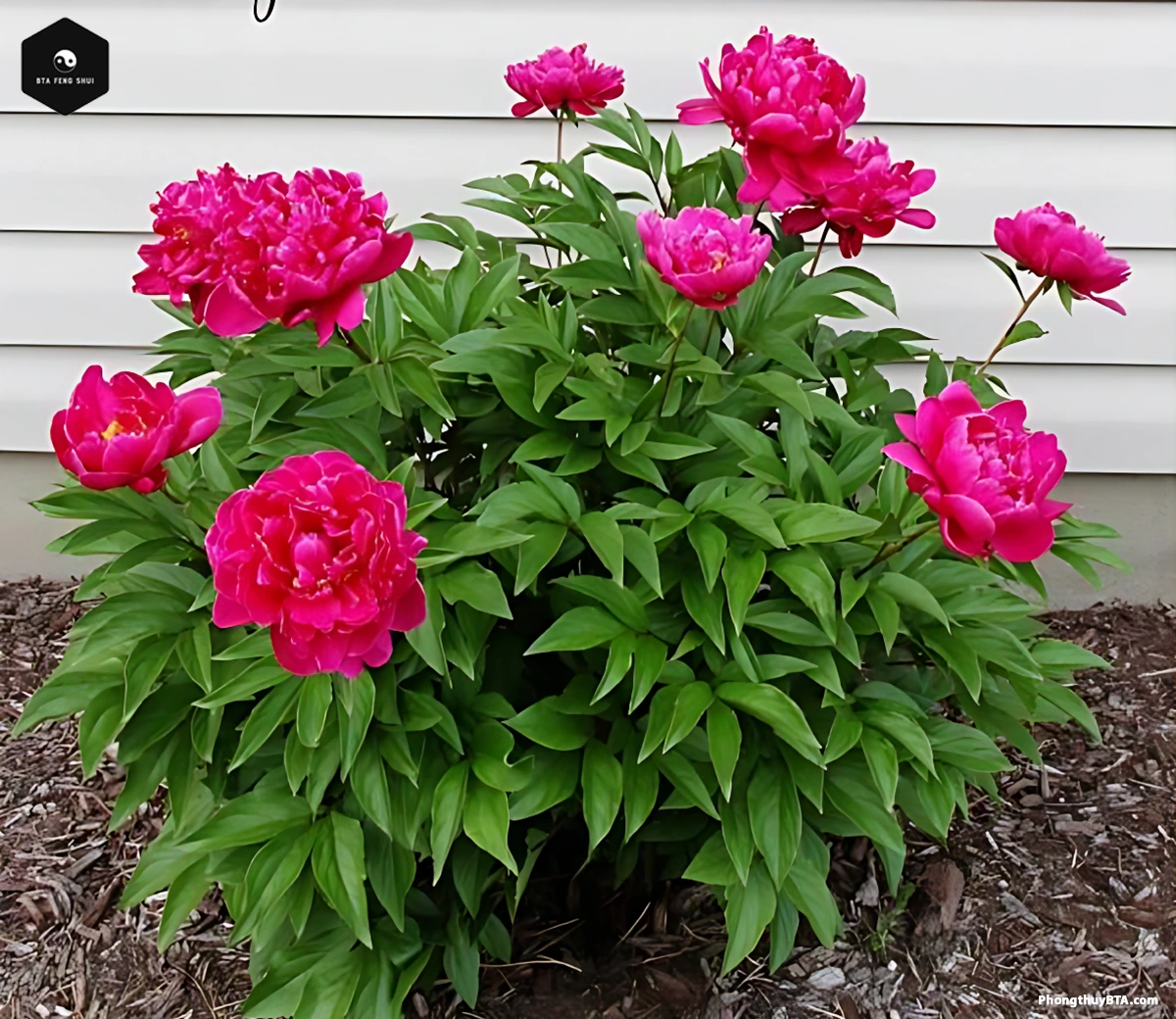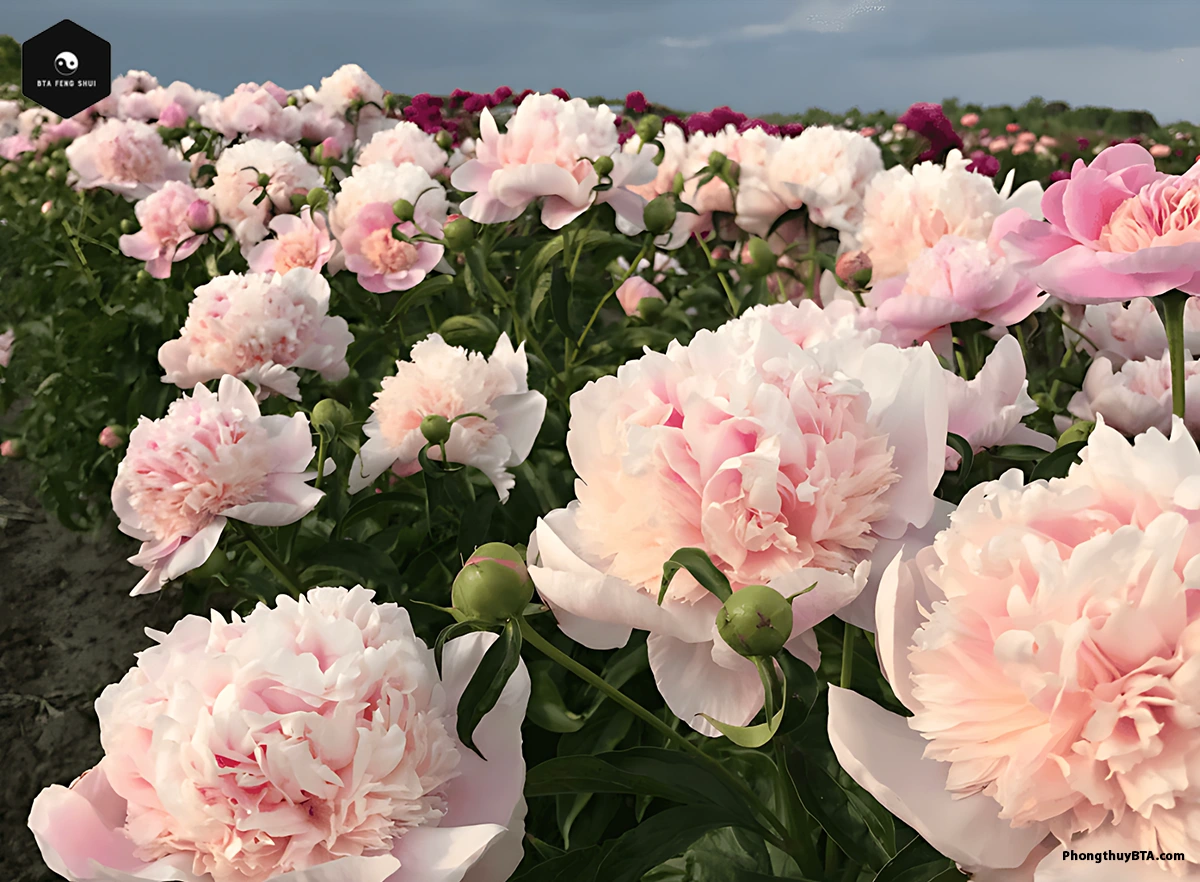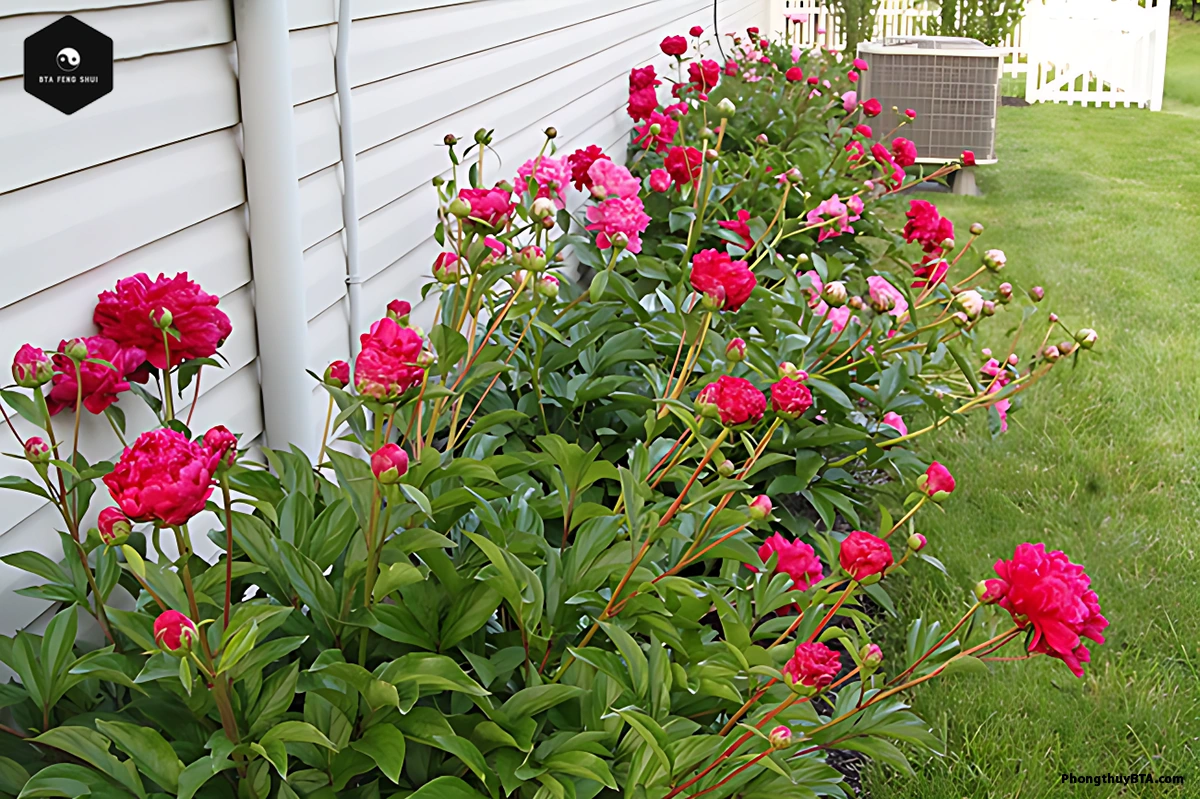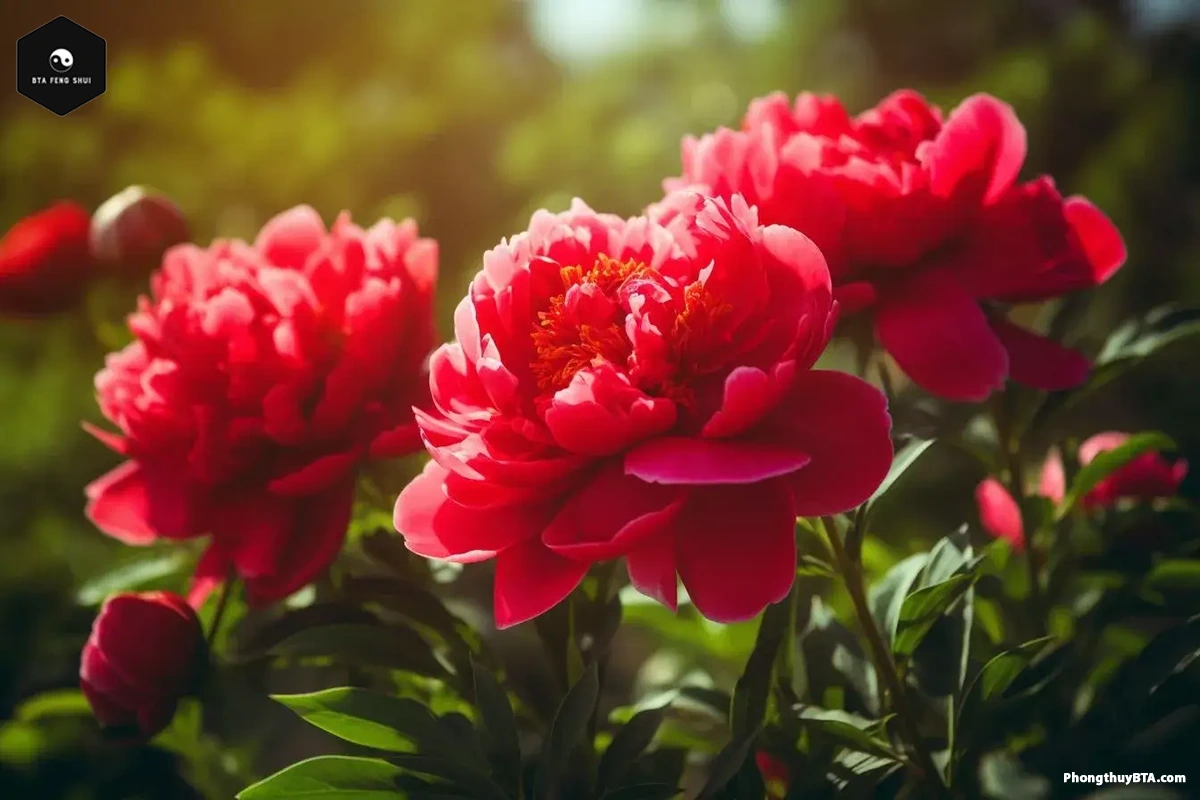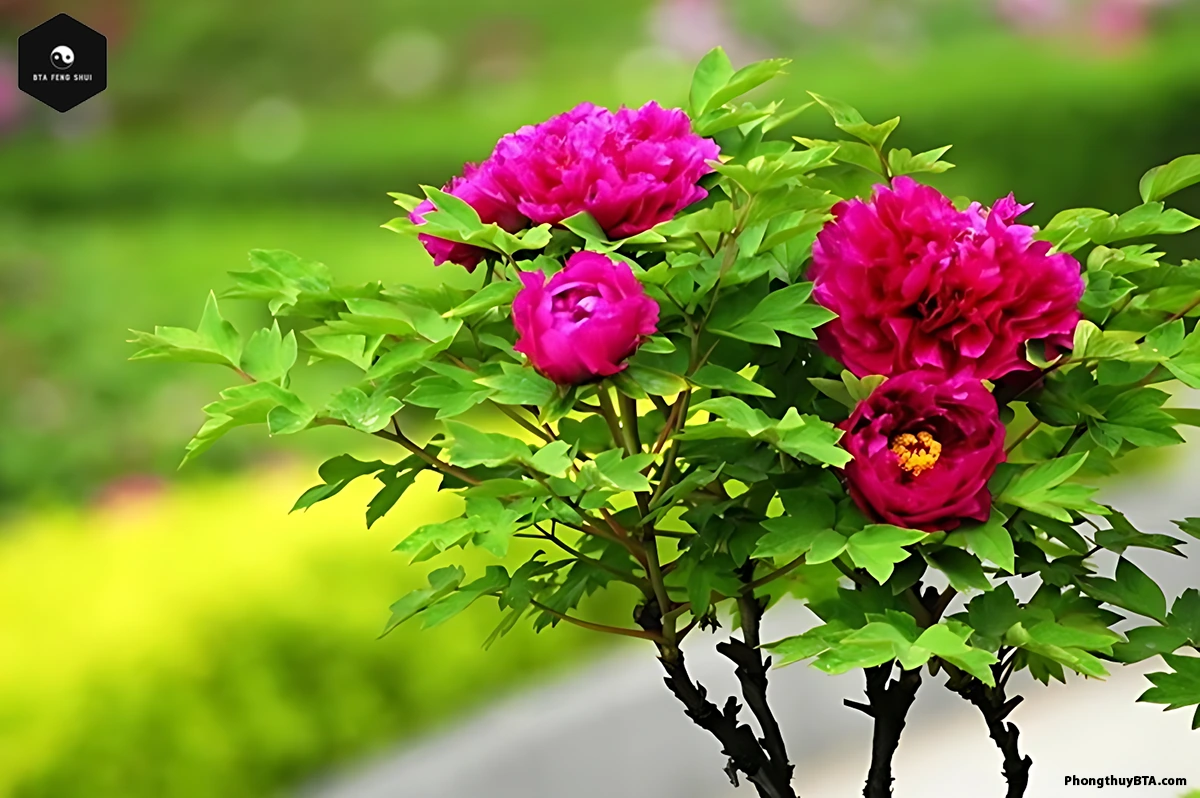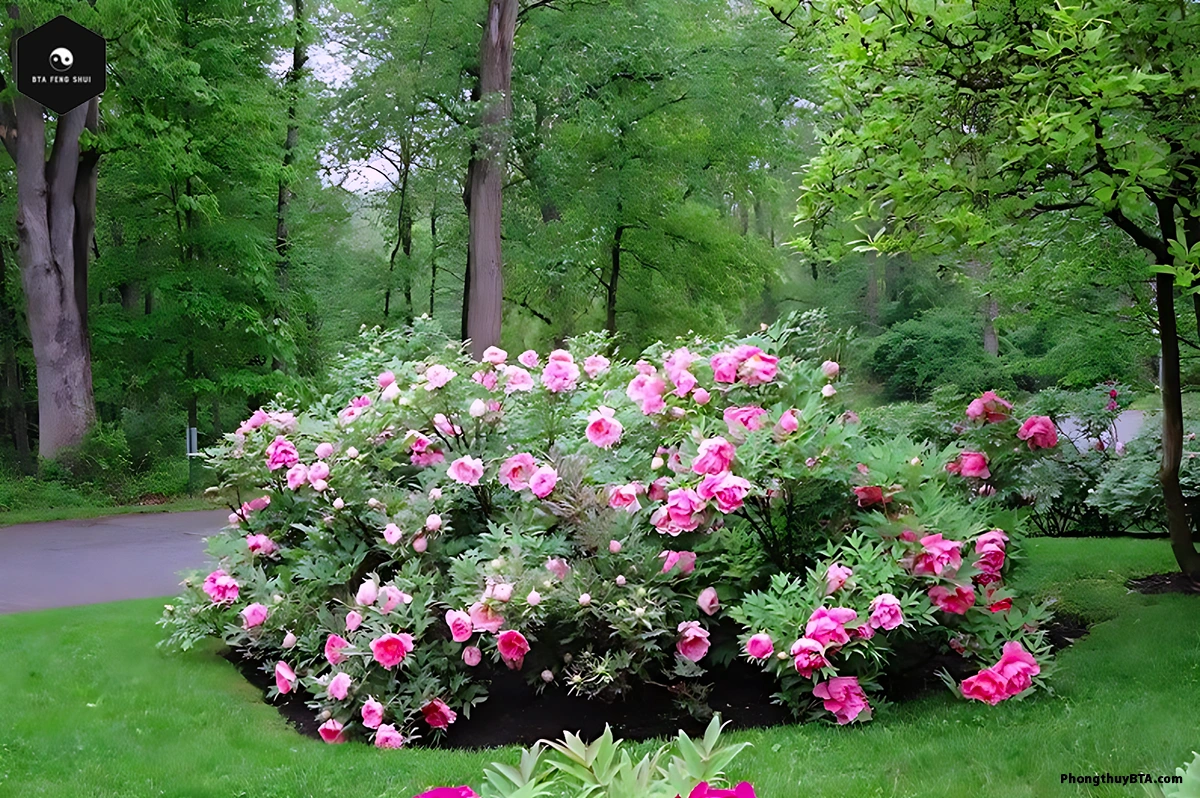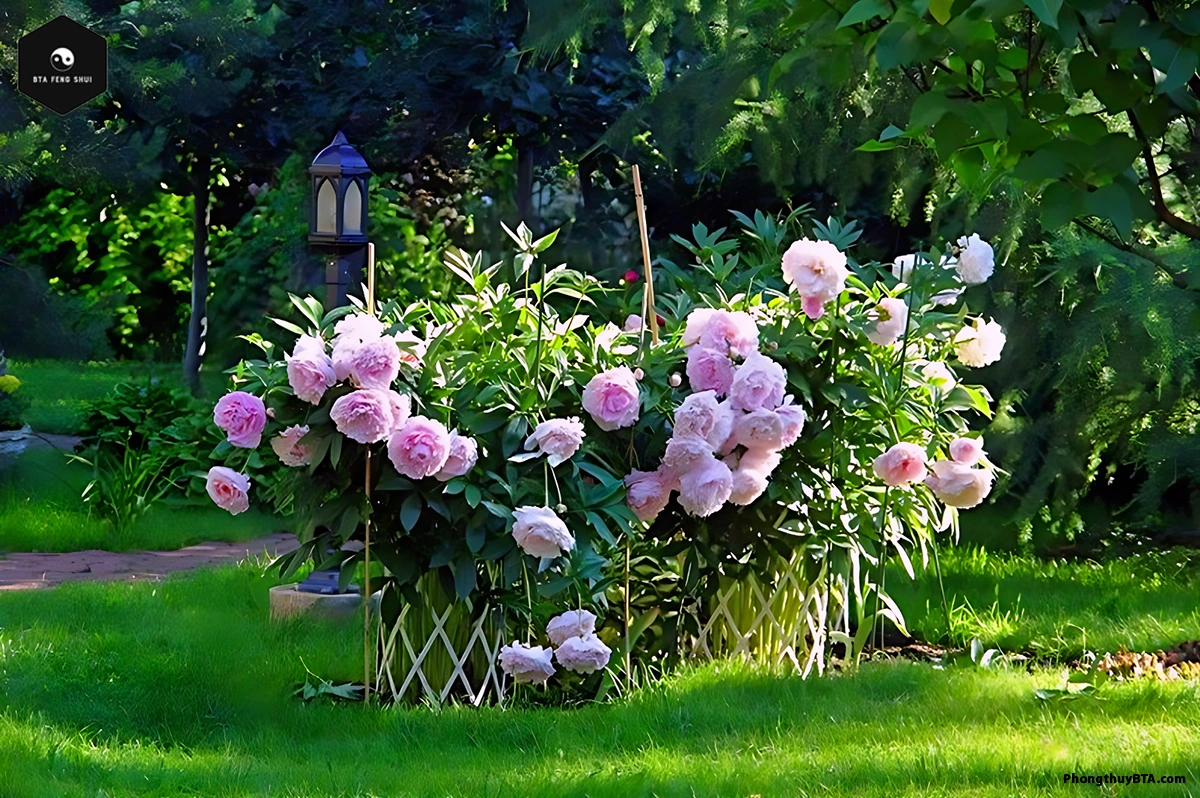Peonies are cherished for their stunning blooms and Feng Shui power, bringing wealth, love, and harmony. At BTA Feng Shui, we show you how to grow and care for peonies to enhance both your garden’s beauty and the positive energy in your home.
Discover the Elegance of Peonies
Peonies, known as the “queen of flowers,” captivate with their lush, fragrant blooms in colors like pink, red, white, and yellow. Their longevity—living up to 100 years—makes them a lasting garden staple.
Native to Asia, Europe, and Western North America, peonies belong to the Paeonia genus, with about 33 species. Their large, showy flowers and sturdy stems make them ideal for gardens and floral arrangements.
Key Characteristics of Peonies
- Common Names: Peony, peonies, paeony
- Botanical Name: Paeonia officinalis (herbaceous), Paeonia suffruticosa (tree), Paeonia hybrids (Itoh)
- Family: Paeoniaceae
- Plant Type: Herbaceous perennial or woody shrub
- Mature Size: 2-6 ft. tall, 3-5 ft. wide
- Bloom Time: Late spring to early summer (April-June)
- Flower Colors: White, pink, red, yellow, coral, purple
- Hardiness Zones: 3-9 (USDA)
- Toxicity: Mildly toxic to animals due to paeonol
Types of Peonies
- Herbaceous Peonies: Die back in winter, cold-hardy, ideal for Zones 3-8. Example: Sarah Bernhardt (pink, double blooms).
- Tree Peonies: Woody shrubs with larger flowers, suited for Zones 4-9. Example: Bartzella (yellow, vibrant).
- Itoh Peonies: Hybrids combining traits of both, no winter chill needed. Example: Julia Rose (apricot with purple tips).
- Fern-Leaf Peonies: Rare, with delicate, feathery foliage. Example: Paeonia tenuifolia (red, single blooms).
Peonies’ diverse forms and colors offer versatility for any garden, enhancing both aesthetic and energetic appeal.
Feng Shui Significance of Peonies
In Feng Shui, peonies symbolize prosperity, romance, and protection, making them a potent tool for harmonizing your space. Their vibrant energy attracts positive chi, fostering love and abundance.
Symbolic Meanings
- Red Peonies: Represent passionate love and strong relationships, ideal for enhancing marital harmony.
- Yellow Peonies: Symbolize wealth and prosperity, attracting financial success.
- White Peonies: Embody purity and peace, promoting calm and clarity.
- Pink Peonies: Encourage joy, optimism, and harmonious relationships.
Ideal Placement
- Southwest (Love Sector): Plant red or pink peonies to boost romance and strengthen partnerships.
- Southeast (Wealth Sector): Place yellow peonies to attract prosperity and business success.
- West (Creativity Sector): White peonies foster peace and inspiration.
Avoid placing peonies near sharp corners or cluttered areas, as these disrupt chi flow. Planting near the front entrance invites positive energy into your home.
Suitable Zodiac Signs and Elements
Peonies align with the Fire element, making them ideal for Fire and Earth zodiac signs:
- Fire Signs: Rat (1948, 2008), Snake (1965, 2025), Horse (1978, 2038), Rooster (1957, 2017), Dog (1958, 2018), Pig (1959, 2019). These individuals benefit from enhanced luck and relationships.
- Earth Signs: Ox (1961, 2021), Tiger (1938, 1998), Rabbit (1939, 1999), Dragon (1976, 2036), Goat (1991, 2031), Dog (1946, 2006), Rooster (1969, 2029). Peonies attract prosperity and stability for these signs.
How to Plant Peonies for Optimal Growth
Proper planting ensures peonies thrive and channel positive energy. Fall (September-October) is the best time, allowing roots to establish before winter.
When to Plant Peonies
- Fall Planting: Plant 6 weeks before the ground freezes for best results. Spring planting is possible but may delay blooming by a year.
- Feng Shui Tip: Planting in fall aligns with the grounding energy of the season, promoting stability.
Selecting a Planting Site
- Choose a sunny location with 6-8 hours of direct sunlight daily. In Zone 8, provide afternoon shade.
- Ensure well-drained soil (pH 6.5-7.0). Amend with compost if soil is heavy or sandy.
- Avoid planting near trees or shrubs to prevent nutrient competition, ensuring free-flowing chi.
Planting Steps
- Select roots with 3-5 eyes for faster blooming.
- Dig a hole 2 ft. wide and as deep as the root ball.
- Place roots with eyes facing up, 1-2 inches below the soil surface. Deeper planting inhibits blooms.
- Backfill with soil, water thoroughly, and add a 2-inch mulch layer (avoid covering the crown).
- Space plants 3-4 feet apart for air circulation and root growth.
Initial Care After Planting
- Keep soil moist but not soggy to prevent root rot.
- Avoid fertilizing immediately; compost provides sufficient nutrients initially.
Peony Care: Tips for Long-Term Success
Peonies are low-maintenance but require specific care to maintain their beauty and Feng Shui benefits.
Watering Peonies
- Water deeply every 7-10 days during establishment. Mature plants need 1-2 inches weekly in dry periods.
- Test soil dryness with your finger; overwatering disrupts chi and invites disease.
Fertilizing Peonies
- Apply compost or a 5-10-5 fertilizer post-bloom in spring, once every few years.
- Tree peonies benefit from annual sulfate and bone meal feeding.
- Minimal feeding aligns with Feng Shui’s principle of simplicity.
Pruning Peonies
- Herbaceous Peonies: Cut to ground level in fall after foliage yellows to prevent disease.
- Tree Peonies: Remove only dead or damaged wood, preserving woody stems.
- Clean shears to avoid disease spread, clearing stagnant energy.
Supporting Peony Blooms
- Use peony rings or cages for heavy blooms. Varieties like Monrovia’s have sturdy stems, reducing staking needs.
- Support symbolizes nurturing stability in Feng Shui.
Winter Care for Peonies
- Herbaceous peonies die back naturally; remove debris to prevent fungal issues.
- In cold climates (Zones 3-4), apply a light mulch layer after frost, removing it in spring.
- Tree and Itoh peonies need minimal winter care, aligning with nature’s rest cycle.
Read more:
- Bougainvillea in Feng Shui: Planting and Care Guide
- How to Grow and Care for Hydrangeas in Feng Shui Gardens
Common Peony Problems and Solutions
Powdery Mildew
- Symptoms: White coating on leaves.
- Solution: Apply organic fungicide every 10-14 days. Ensure full sun and good airflow.
- Feng Shui Note: Clearing disease restores vibrant energy.
Ants on Peony Buds
- Ants are harmless, attracted to nectar. Shake buds gently before cutting for arrangements.
- In Feng Shui, ants symbolize diligence and harmony with nature.
Failure to Bloom
- Causes: Too deep planting, insufficient sunlight, or young plants (1-3 years).
- Solution: Adjust planting depth, ensure 6+ hours of sun, and be patient with new plants.
Harvesting Peonies for Arrangements
Cut peonies at the “marshmallow stage” (soft, squishy buds) for a week-long vase life. Leave some foliage on the plant to store energy. In Feng Shui, displaying cut peonies in the living room or dining area enhances beauty and positive chi.
Advanced Peony Cultivation Tips
- Disbudding: Remove small buds on young plants (1-2 years) to prioritize root growth, fostering long-term prosperity.
- Dividing Peonies: Every 8-10 years, divide roots in fall, ensuring 3-5 eyes per division for vigor.
- Companion Planting: Pair with lavender or roses for pest resistance and aesthetic harmony, enhancing garden chi.
Peonies bring both beauty and Feng Shui benefits, attracting love, wealth, and harmony. Follow this guide from BTA Feng Shui to grow and care for them, and share the joy of peonies with others.



